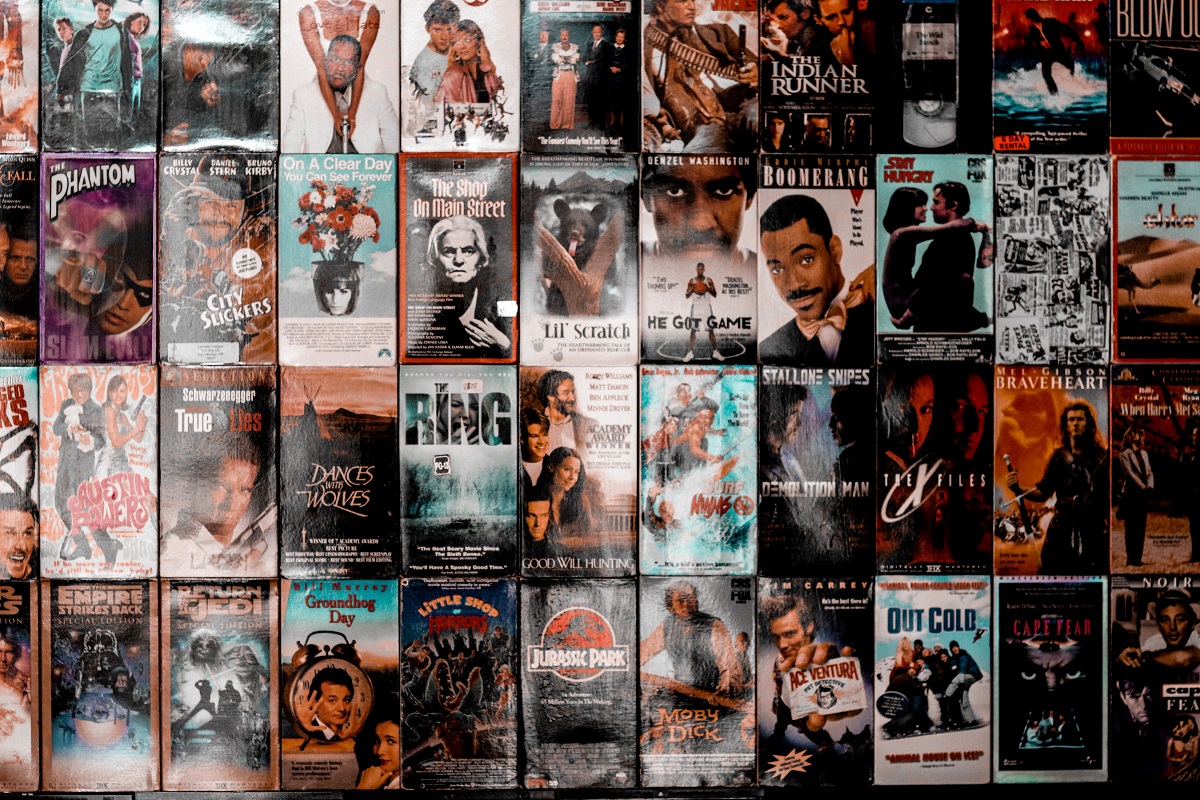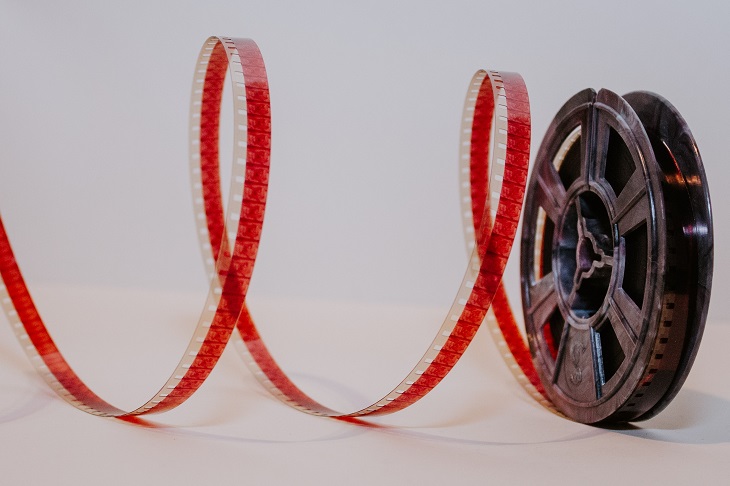Preserving Cinematic History with NFTs: The Digital Future of Film Archives

Movies can be a portal for exploring the culture and way of life of those who came before us. If not properly taken care of, this insight could be lost forever. So, film preservation is more than just storage; it’s also about taking care of generational knowledge. It’s about preserving traditions, legacies, and even language. This is why NFTs in film preservation, one of the latest NFT technologies, could be an amazing area to explore.
So many cult classics, like Gentlemen Prefer Blondes, are still so influential in today’s social climate. Seventy years after it came out, it’s still referenced in a lot of pop culture moments. Without proper preservation, it’s possible that people today would’ve never had a chance to experience it.
A Very Brief History of Film and its Preservation
In the 19th century (1893), the movie camera was introduced for the first time. These cameras used plastic film made from cellulose nitrate. The films were susceptible to nitrate decay after a few years, and even less without proper care. The films needed to be stored, taking into account things like humidity, temperature, and chemical reactions.
The end of the 20th century ushered in the mainstream shift to digital technology. By the 2000s, digital filmmaking had picked up momentum. The 2010s brought even newer technologies for film archives to evolve. Technologies like digital film archives and NFTs are proving that the future of archiving is even more promising.
What Are NFTs, And What Do They Do?
A quick refresher: non-fungible tokens (NFTs) are built on blockchain technology, and they offer a unique way to verify ownership of assets. They address some key digital security issues faced today.
Analog films, while revolutionary at the time they were first made, have encountered a lot of problems since then. Only about half of the feature-length American movies made before 1950 are still completely intact. Back then, film archiving was not taken seriously, and physical archives were limited by space. It wasn’t until other marketable streams like home videos and DVDs became popular that there was a need to find new ways to preserve film.
Today, film preservation has evolved greatly thanks to advancements in technology like digital film archives and NFTs.

The Role Of The Blockchain In Film Preservation
With all this talk about NFTs being the future of archiving, it’s important to understand the magic behind how NFTs work: the blockchain.
The blockchain is a digital ledger that contains several blocks of data forming a chain, hence the name. It’s the underlying technology that NFTs are built on.
Records on the blockchain are permanent, making NFTs very authentic and transparent. It’s also publicly available, so it ensures the accessibility of whatever is stored on it. All data on a blockchain can be viewed by anyone at any time. In other words, the data is accessible and available for a very long time.
The public nature of blockchain also reduces the risk of forgery attempts. This way, films are protected from damage, loss, and theft, ensuring their legitimacy for creators and audiences.
The Benefits Of NFTs In The Future Of Digital Archiving
A lot of people will agree that preserving history is of the utmost importance. If it isn’t taken seriously, a lot of information can be lost forever. Film history is a term that isn’t limited to movies and shows – it also covers documentaries, live footage, political events across the years, and more.
Let’s take a look at a few reasons why the practice of good film preservation, particularly through NFTs, is non-negotiable.
1. Unrestricted Accessibility
NFTs bid goodbye to the era of confined physical archives. Digital film archives and NFTs don’t have the same physical restrictions as traditional film. With no fear of damage and no physical barriers, films are more open to a global audience.
2. The Potential For Decentralized Ownership
There is also the potential for decentralized ownership, which will completely change how people interact with movies. With this, film lovers will be able to interact with cinematic history in their own way, breathing new life into film appreciation.
3. Cultural Benefits
Film is a visual medium that’s used to pass down the stories, folklore, and customs of the time it was made. A certain amount of culture, particularly that of minorities and indigenous people, would have been lost by now if film hadn’t existed. By using NFTs to preserve film history, we make sure these traditions stick around for a long time to come.

4. Educational Benefits
With a proper internet connection and device, most people can access NFTs. This makes it easy for students, scholars, and film enthusiasts to access historical films. Through these, they can learn about different eras, cultures, cinematography, and storytelling techniques.
5. Monetization
Managing film archives is quite costly and labor-intensive. Not only does the introduction of NFTs in film preservation lessen costs, but it can also be a way to monetize the films. That way, whenever content is shared with the public through copies, the archive earns money for it.
It doesn’t stop there; through the use of smart contracts, films can continue to receive royalties for a long time. This money can then go into the upkeep of the archive and movies.
How NFTs Are Already Being Used To Preserve History
The use of NFT in preservation goes beyond the scope of just film. NFTs are already actively being used for cultural preservation across different fields.
An example of this is the New York Historical Society’s NFT project “Own the Impossible.” The project was set up to preserve historical relics and documents. It even included a letter written by George Washington during the American Revolutionary War.
Another example is the partnership between tech giant Tencent and the Dunhuang Academy. The project aimed to create digital NFT versions of the paintings in the Mogao Caves, a UNESCO World Heritage Site.
NFTs’ usefulness isn’t limited to art preservation. Metaverse company Monuverse aims to preserve the heritage of art, architecture, music, and even film through NFTs. The goal is to make it accessible to anyone, anywhere, anytime.
It’s no secret that people are figuring out the potential of NFTs in keeping important things safe for a long time. Their potential for film preservation is now being acknowledged on an even bigger scale.

NFTs mark a turning point in digital preservation, but especially in film preservation. The intersection of film archives and non-fungible tokens presents many ideas of what the future of archiving may look like. It involves history being more accessible; it also involves cheaper archiving methods.
Blockchain technology ensures the authenticity, accessibility, and longevity of film assets. With that being said, rushing into this can be dangerous or detrimental. It’s important to invest time in learning more about blockchain technology. This way, there will be fewer decisions that do more harm than good in the long run.
On this journey to preserve history, bridging the gap between cinematic heritage and blockchain technology is the key. It will allow the creation NFTs that change the status quo of film preservation, and will stand as a testament to the enduring power of storytelling in the digital age.
Featured image by Tyson Moultrie on Unsplash
Tags: Film, Film Archives, Film Industry, Movie NFTs, NFT, NFT Projects, NFTs, NFTs in the film industry
